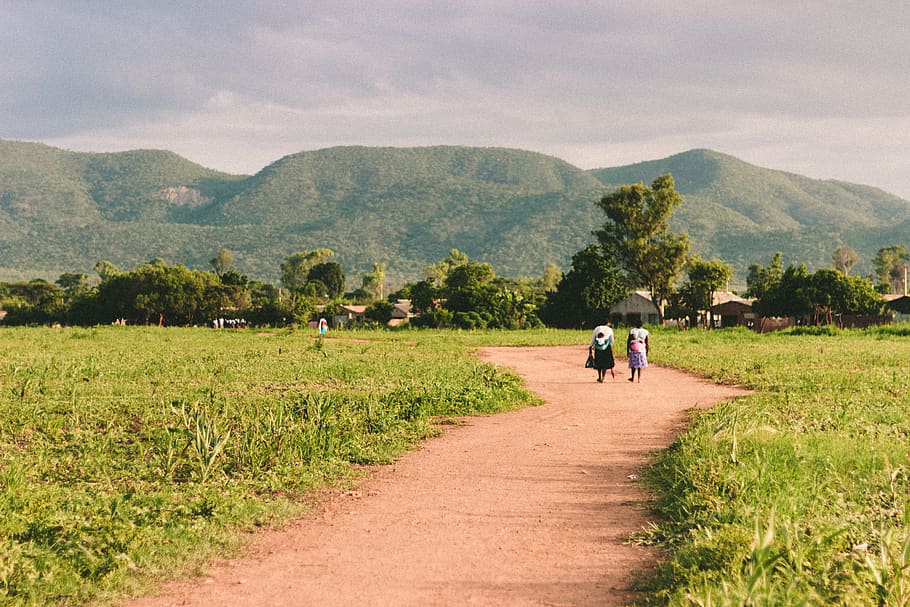Chimanimani is a village situated in Manicaland Province, southeastern Zimbabwe, near the Mozambique border.
Initially named Melsetter in 1895, it underwent subsequent changes, including the name Mandidzudzure post-independence in 1980, before settling on Chimanimani after consultations with the local population.
The village, founded by Thomas and Dunbar Moodie in 1892, faced challenges, notably during Cyclone Idai in 2019.
This comprehensive biography delves into the history, culture, geography, and notable features of Chimanimani.
ALSO READ: https://zimprofiles.com/chronicles-of-shurugwi-a-historic-town-in-midlands-province/

Ndau Culture Chimanimani: picture credit to Flickr
Name of Origin
The name Chimanimani has evolved over the years, reflecting the village’s rich history.
Founded as Melsetter in 1895, it transitioned to Mandidzudzure post-independence in 1980 before adopting its current name, Chimanimani, following community consultations.
“Chimanimani” can refer to two things:
-
Chimanimani Mountains: a mountain range located on the border between Zimbabwe and Mozambique. Its name comes from the Shona language, where it means “place of mist” or “place of the thunder god”.
-
Chimanimani, Zimbabwe: a town located in the Manicaland province of eastern Zimbabwe. The town was originally named Melsetter after a Scottish estate, but its name was changed to Chimanimani after Zimbabwe gained independence in 1980.
History of Chimanimani
Founded by the Moodie brothers in 1892, Chimanimani saw a shift to its current location in 1895.
Renamed Mandidzudzure in 1980, the village faced significant challenges during Cyclone Idai in 2019.
The primary school in Chikukwa was destroyed, underscoring the impact of natural disasters on the community.
Brief History of the Chimanimani Mountains and Town:

Ndau Culture Chimanimani: picture credit to The Newyork Times
Chimanimani Mountains:
- Geological Formation: Formed about 600 million years ago during the Pan-African Orogeny, a period of mountain building.
- Early Settlements: Evidence suggests San people inhabited the area for thousands of years. Later, Bantu-speaking groups arrived, including the ancestors of the present-day Shona and Manica people.
- Cultural Significance: The mountains hold spiritual significance for the Shona people, considered the abode of powerful spirits and ancestors.
- Colonial Period: European explorers arrived in the late 19th century, followed by settlers who established farms and mines in the foothills.
Chimanimani Town:
- Founding (1892): Established by European settlers, initially named Melsetter after their Scottish estate.
- Colonial Era: Served as a centre for administration, farming, and mining activities.
- Independence (1980): The town was renamed Mandidzudzure, later changed to Chimanimani following consultations with residents.
- Cyclone Idai (2019): Devastated the town, causing widespread damage and infrastructure collapse.
Shared History:
- Independence Struggle: The Chimanimani region played a role in Zimbabwe’s fight for independence, with guerrilla fighters using the mountains as a base.
- Conservation: Chimanimani National Park was established in 1949 to protect the mountains’ unique biodiversity and landscapes.
ALSO READ: https://zimprofiles.com/mysteries-and-marvels-unraveling-the-tapestry-of-nyanga/
Ndau Culture Chimanimani
The Ndau people, with a centuries-old presence in the region, form the cultural fabric of Chimanimani.
Their history intertwines with the Chimanimani Mountains, and the village serves as a cultural hub with initiatives like the Zimbabwe Mountain Guide Training Course.
The Chimanimani region, encompassing both the mountains and the town, boasts a rich and diverse culture shaped by various influences, including:
Shona and Manica Traditions:
- Spiritual connection to the mountains: The Chimanimani Mountains hold immense spiritual significance for the Shona and Manica people, believed to be the dwelling place of powerful spirits and ancestors. Rituals, ceremonies, and traditional beliefs are deeply intertwined with the mountains.
- Folklore and legends: Numerous tales and myths are passed down through generations, explaining the creation of the mountains, supernatural occurrences, and moral lessons.
- Music and dance: The region has vibrant music traditions, featuring drums, mbira (thumb piano), and unique rhythms. Traditional dances often depict hunting, storytelling, and spiritual rituals.
- Arts and crafts: Basket weaving, wood carving, beadwork, and pottery are prominent forms of artistic expression, often infused with symbols and patterns reflecting the local culture.

Ndau Culture Chimanimani: picture credits to Vectzee
Colonial Influences:
- Missionary activity: Missionaries introduced Christianity and Western education, impacting social structures and cultural practices.
- Architectural styles: Colonial buildings and infrastructure stand alongside traditional architecture, showcasing a blend of influences.
- Language mixing: Shona, English, and Manica languages interact and influence each other, creating a distinct dialect spoken in the region.
Modern Chimanimani:
- Tourism: Increasing tourism brings diverse cultural influences and contributes to the local economy.
- Conservation efforts: Initiatives to protect the environment and cultural heritage are undertaken by communities and organizations.
- Urbanization: The town of Chimanimani experiences development and social change, while maintaining its unique cultural identity.
Further Exploration:
- Explore specific aspects of Chimanimani culture that interest you, such as traditional ceremonies, music genres, or artistic styles.
- Visit Chimanimani National Park or the town of Chimanimani to experience the culture firsthand.
- Interact with local communities and listen to their stories and traditions.
Geographical Location
Chimanimani is located in Manicaland Province, around 120 km south of Mutare and 365 km southeast of Harare.
The village’s coordinates are 19°48’0.00″S, 32°51’36.00″E, placing it in a region rich in natural beauty and ecological diversity.
Chimanimani” can refer to two things, so the geographical location needs clarification:
1. Chimanimani Mountains:
- Location: Border between Zimbabwe and Mozambique, forming part of the Eastern Highlands.
- Coordinates: Approximately 19° 45’S to 20° 15’S and 32° 30’E to 33° 15’E (covering an area of about 50 km in length).
- Specific Points: The highest peak is Monte Binga (2,436 m) in Mozambique, with other notable peaks like Mt. Peza, Mt. Dombe, and Mawenje (Turret Towers) in Zimbabwe.
2. Chimanimani Town:
- Location: Manicaland Province, eastern Zimbabwe, near the eastern border with Mozambique.
- Coordinates: Approximately 19° 48’S and 32° 51’E.
- Distance: About 120 km south of Mutare (provincial capital) and 365 km southeast of Harare (national capital).
ALSO READ: https://zimprofiles.com/mysteries-and-marvels-unraveling-the-tapestry-of-nyanga/
Places to Visit
Chimanimani boasts nature-based attractions like Bridal Veil Falls, Chimanimani Mountains, Arboretum, Green Mount, and Pork Pie Sanctuary.
The region offers hiking trails, an Outward Bound centre, Nyakwaha and Haroni Botanical Reserves, and captivating waterfalls.
Places to Visit in Chimanimani:

Ndau Culture Chimanimani Picture credit to Flickr
Chimanimani offers a diverse range of attractions, catering to nature enthusiasts, adventure seekers, and culturally curious travellers. Here are some top picks:
Natural Wonders:
- Chimanimani National Park: Immerse yourself in the breathtaking scenery of the Chimanimani Mountains, boasting dramatic peaks, cascading waterfalls, diverse flora and fauna, and scenic hiking trails. Explore the evergreen forests, discover hidden pools, and encounter unique wildlife like the elusive Samango monkeys and colourful birds.
- Bridal Veil Falls: Witness the cascading beauty of these falls, plunging 50 meters into a refreshing pool. Hike to the top for panoramic views of the surrounding mountains and valleys.
- Nyangombe Falls: Hike through lush forests to reach these hidden falls, offering a tranquil escape and a refreshing dip in the pool beneath.
- Chirinda Forest Botanical Reserve: Explore this diverse ecosystem, home to over 700 tree species, including the iconic “Big Tree,” the tallest indigenous tree in Zimbabwe. Discover rare plants, vibrant flowers, and diverse birdlife.
Cultural Experiences:
-
Garman Museum: Learn about the history and culture of the Chimanimani region through exhibits on archaeology, ethnography, and the natural environment.
-
Traditional Villages: Visit local villages and experience the traditional way of life, witnessing crafts like basket weaving and wood carving, and enjoying authentic cuisine.
-
Chipinge Craft Center: Browse and purchase beautiful locally made crafts, supporting local artisans and preserving cultural traditions.
Adventure Activities:
- Hiking: Embark on various hiking trails within the Chimanimani National Park, ranging from easy walks to challenging climbs. Witness stunning views, waterfalls, and diverse landscapes.
- Rock Climbing: Experienced climbers can challenge themselves on the granite cliffs and rock faces, offering thrilling ascents and breathtaking panoramas.
- Birding: Spot a variety of bird species, including endangered ones, in the diverse habitats of the mountains and forests.
Additional Points:
- Consider the time of year for your visit, as the rainy season (November to March) can affect accessibility and trail conditions.
- Plan your activities based on your fitness level and desired experience.
- Respect local communities and their traditions.
- Be mindful of the environment and practice responsible tourism.
Mysteries of Chimanimani
While known for its scenic beauty, Chimanimani holds mysteries, including the challenges faced during Cyclone Idai.
Land mines, remnants from the Rhodesian Bush War, remain a concern, particularly after heavy rains, posing hazards in the area.
The word “mystery” about Chimanimani can bring up various interpretations, so to give you the most relevant information, I need a bit more context. What kind of mysteries are you interested in? Here are some possibilities:
Natural Mysteries:
- Unexplored areas: The Chimanimani Mountains are vast and remote, with some areas rarely explored by humans. Some mysteries lie in hidden caves, unclimbed peaks, and undiscovered species lurking in the diverse ecosystem.
- Geological formations: The formation of the mountains itself holds mysteries, with ongoing research on its geological history and unique rock formations.
- Cryptid sightings: There have been occasional reports of sightings of mythical creatures like “Chimanimani Mountain Devils” or “Ngwiti,” though their existence remains unproven.
Cultural Mysteries:
- Ancient ruins: Some believe remnants of ancient civilizations or lost settlements exist in the mountains, though concrete evidence is lacking.
- Folklore and legends: Local folklore often mentions supernatural occurrences, hidden treasures, and spirits inhabiting the mountains. While these are stories, they hold cultural significance and mysteries regarding their origins and meanings.
- Unexplained phenomena: Anecdotal stories sometimes mention strange lights, unusual sounds, or other unexplained events in the mountains, adding to the mystique.
Historical Mysteries:
- Missing persons: Sadly, some individuals have gone missing in the Chimanimani Mountains, leaving mysteries behind their disappearance. Ndau culture Chimanimani
- Unexplained events: Historical accounts may mention unusual occurrences or unsolved puzzles related to the region’s past.
Modern Mysteries:
- The “Mupese-pese” plant: A rapidly spreading invasive plant with unknown origins and defying eradication efforts is baffling scientists and locals.
- Cyclone Idai’s impact: The 2019 cyclone caused immense damage and unearthed potential archaeological sites, raising questions about the region’s hidden history.
Other considerations:
- Do you have a specific story or legend in mind? Knowing its details would help me provide more focused information.
- Are you interested in the scientific aspects of unexplained phenomena or the cultural interpretations?
Schools in Chimanimani
The educational landscape in Chimanimani includes institutions like the primary school in Chikukwa, though challenges, such as destruction during natural disasters, have impacted the local education system.
Chimanimani boasts various educational institutions ranging from primary to secondary levels. However, to offer the most relevant information, I need some additional details:
- Type of school: Are you interested in primary, secondary, or private schools?
- Specific area: Chimanimani covers a large area. Do you have a particular location in mind (e.g., Chimanimani town, Chimanimani National Park vicinity)?
- Specific needs: Are you looking for schools with specific features like boarding facilities, religious affiliation, or focus on certain subjects?
Once you provide more details, I can provide a tailored list of schools in Chimanimani that cater to your needs. Additionally, here are some resources that might be helpful:
- Ministry of Primary and Secondary Education – Manicaland Province: https://www.zinecda.org/manicaland-chapter/
- Directory of Schools in Zimbabwe: https://www.zimbabweyp.com/category/Schools/4
- List of Private Schools in Zimbabwe: https://www.facebook.com/p/Association-of-Independent-Colleges-in-Zimbabwe-100063894307432/
Chimanimani Council Contacts
The local governance structure, represented by the Chimanimani Council, plays a pivotal role in managing and addressing the needs of the community.
It navigates challenges, including those posed by natural disasters, to ensure the well-being of residents.
Physical Address:
Economy
Chimanimani’s economy centers around agriculture, featuring crops like maize, beans, and vegetables, alongside common livestock farming practices. The economic activities are deeply rooted in sustaining the local community.
References
- Chimanimani – Wikipedia
- Author: Various Contributors
- Chimanimani National Park
- Author: Chimanimani Official Website
- Chimanimani Mountains – Wikipedia
- Author: Various Contributors
- Chimanimani Mountains (Zimbabwe) IBA – Zimbabwe
- Author: BirdLife International



